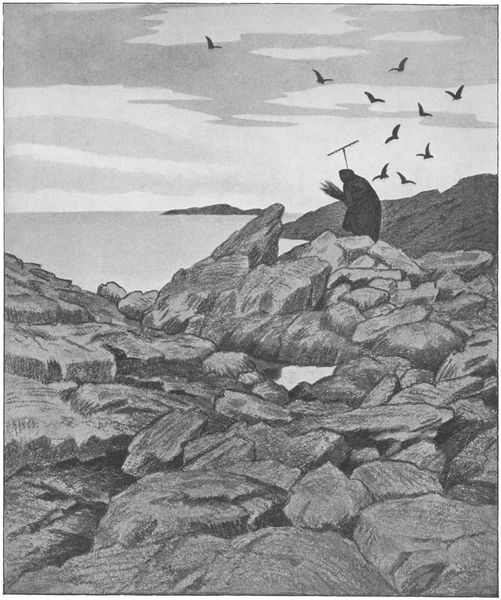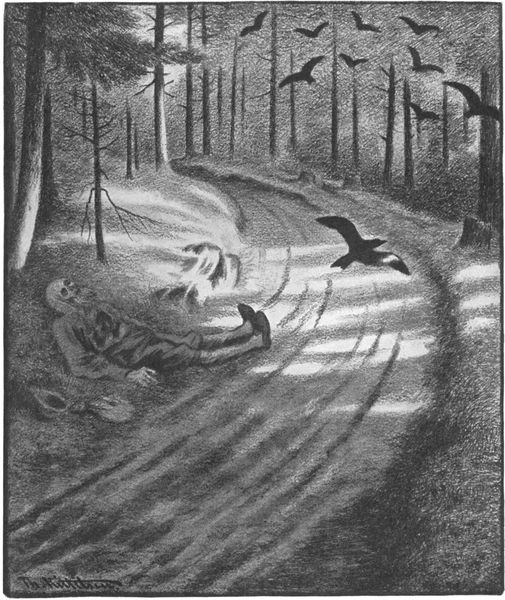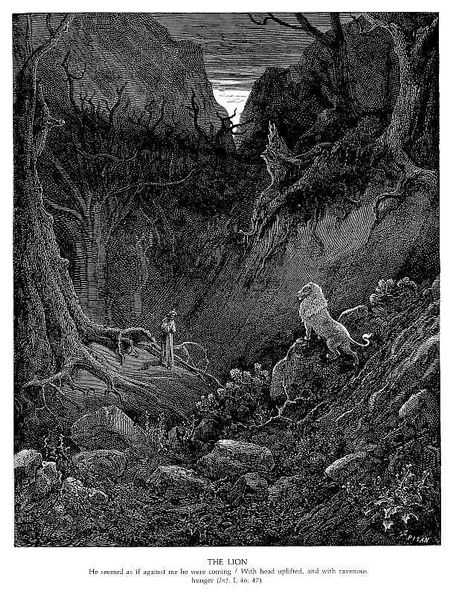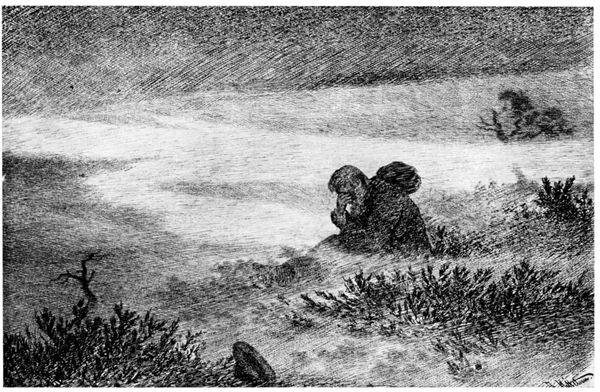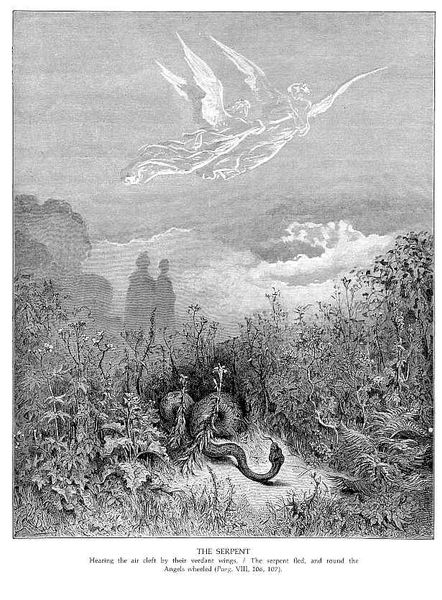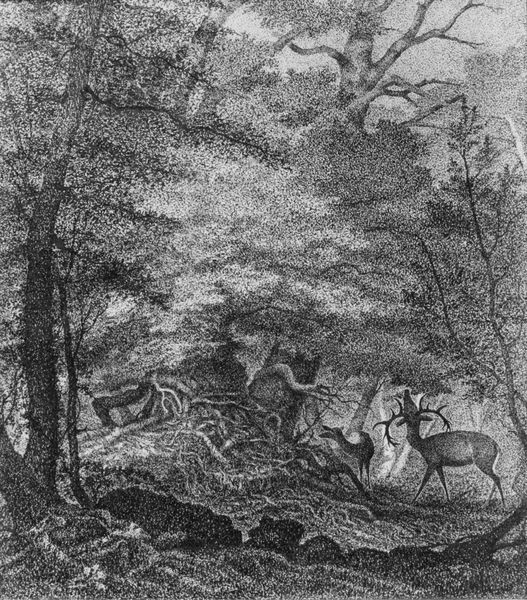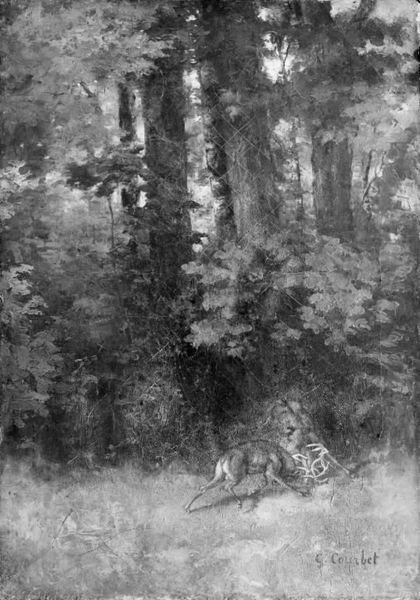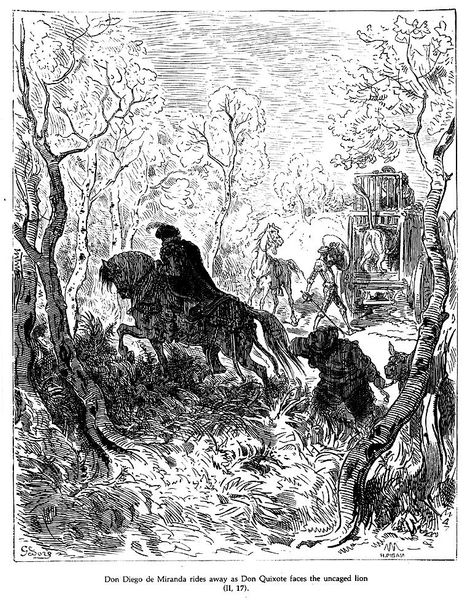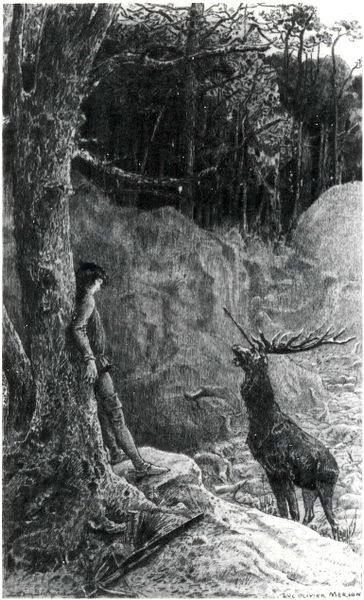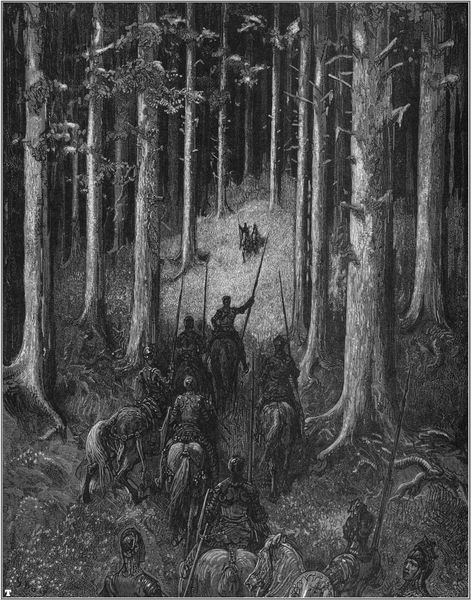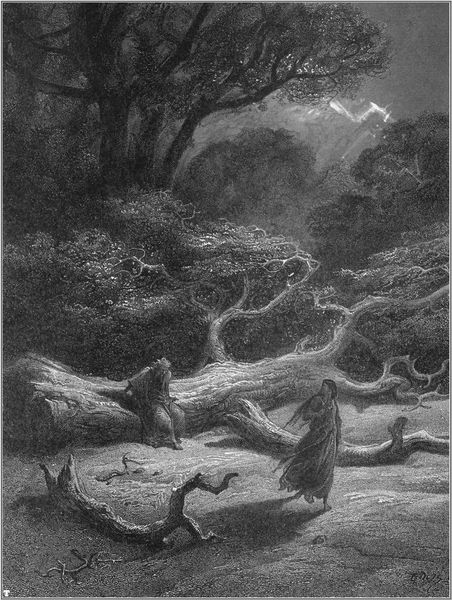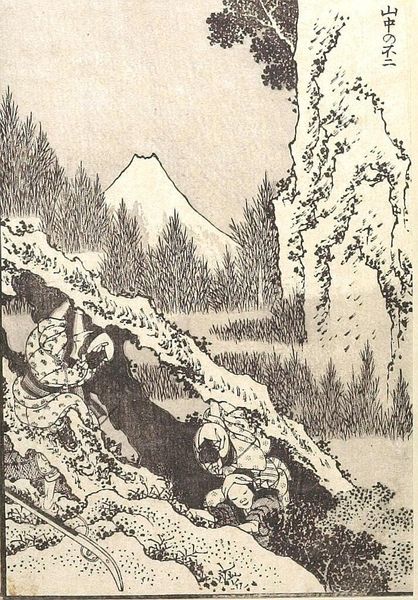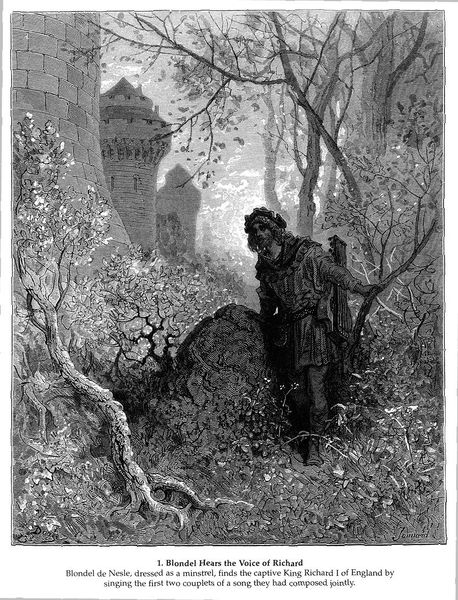
drawing, pencil, charcoal
#
pencil drawn
#
tree
#
drawing
#
narrative-art
#
pencil sketch
#
landscape
#
charcoal drawing
#
pencil drawing
#
pencil
#
surrealism
#
symbolism
#
charcoal
Copyright: Public domain
Curator: Theodor Kittelsen’s drawing, "Mor Der Kommer En Kjerring" from 1900, is before us, rendered in pencil and charcoal. Editor: There's an immediate sense of foreboding here. The stark black and white, the lonely figure—it feels almost theatrical, a stage for something grim. Curator: Absolutely, and Kittelsen was deeply invested in folklore, in how the myths and societal fears were embodied, particularly regarding the roles assigned to older women and marginalized people. Editor: That's evident in the rendering; the lines of the landscape almost seem to press in on the central figure, emphasizing that her materiality comes from the labor and struggle with her environment. Curator: Precisely. It evokes questions of visibility, especially concerning aging women. How are they perceived? Are they figures of comfort or sources of dread? Editor: The ravens, or crows, circling overhead definitely amplify that dread. They suggest an environment ripe with death or decay—perhaps representing societal views towards women of that age. I am drawn to the lines of charcoal in her robes. Curator: Notice how her form seems to melt into the surrounding forest. Her isolation speaks volumes, both on a social and political level. She has this walking stick too, suggesting not just old age but a need for assistance to be able to perform daily labour. Editor: And her connection to the land feels powerful but oppressive. The way her labor is intimately bound to the landscape’s texture—the harsh, unforgiving lines creating the foliage around her—underscores a relationship of survival, not leisure. Curator: Consider the era as well—the turn of the century—when Norway was seeking a distinct national identity. Artists were looking to the local folk tales to build an authentic image. Works such as these reinforced established power dynamics through those characters. Editor: Kittelsen uses humble materials to give form to grand, unsettling themes; a single point can shift my gaze to a sense of existential unease that I keep trying to resolve, like it asks who this artwork truly seeks to serve. Curator: It’s a dark look, but one that's honest. By revealing it, Kittelsen questions what we prefer to hide when looking at gender and the elderly. Editor: A chilling portrait, constructed from lines and anxieties as he creates the representation of aging and alienation from materials readily at hand. It is as striking today as I am sure it was then.
Comments
No comments
Be the first to comment and join the conversation on the ultimate creative platform.

